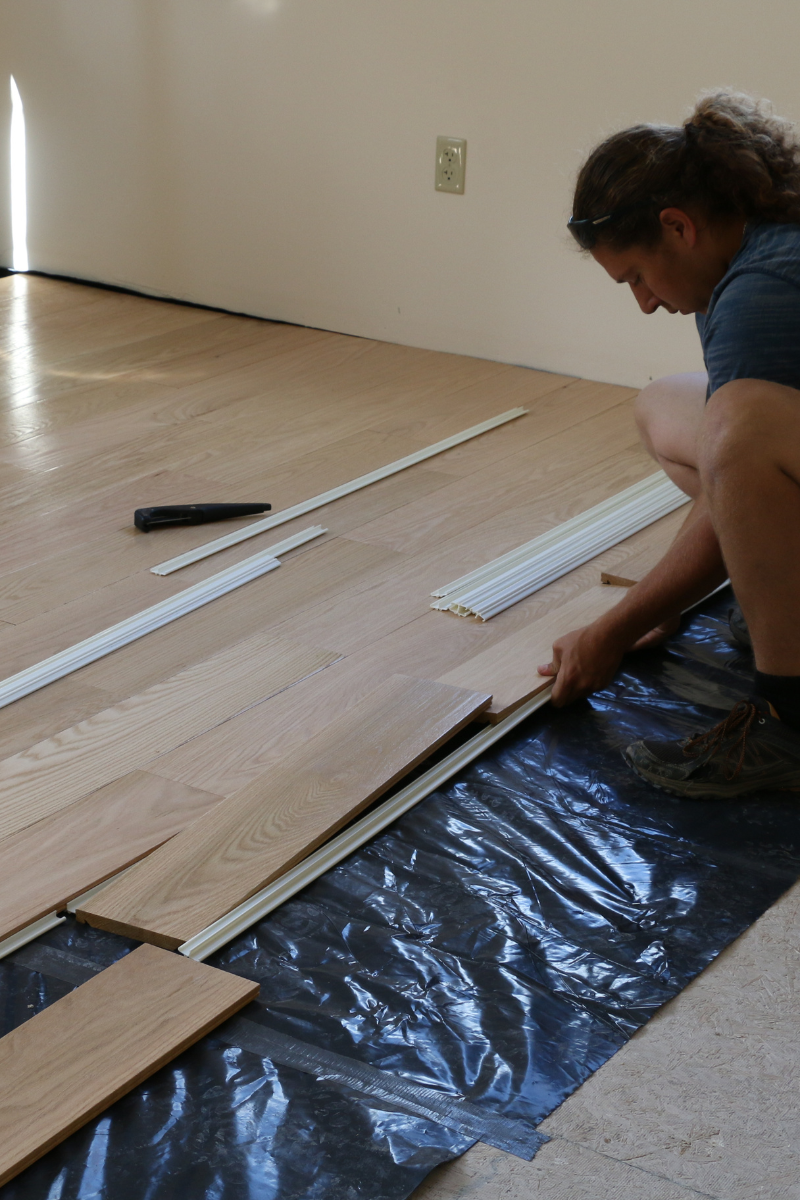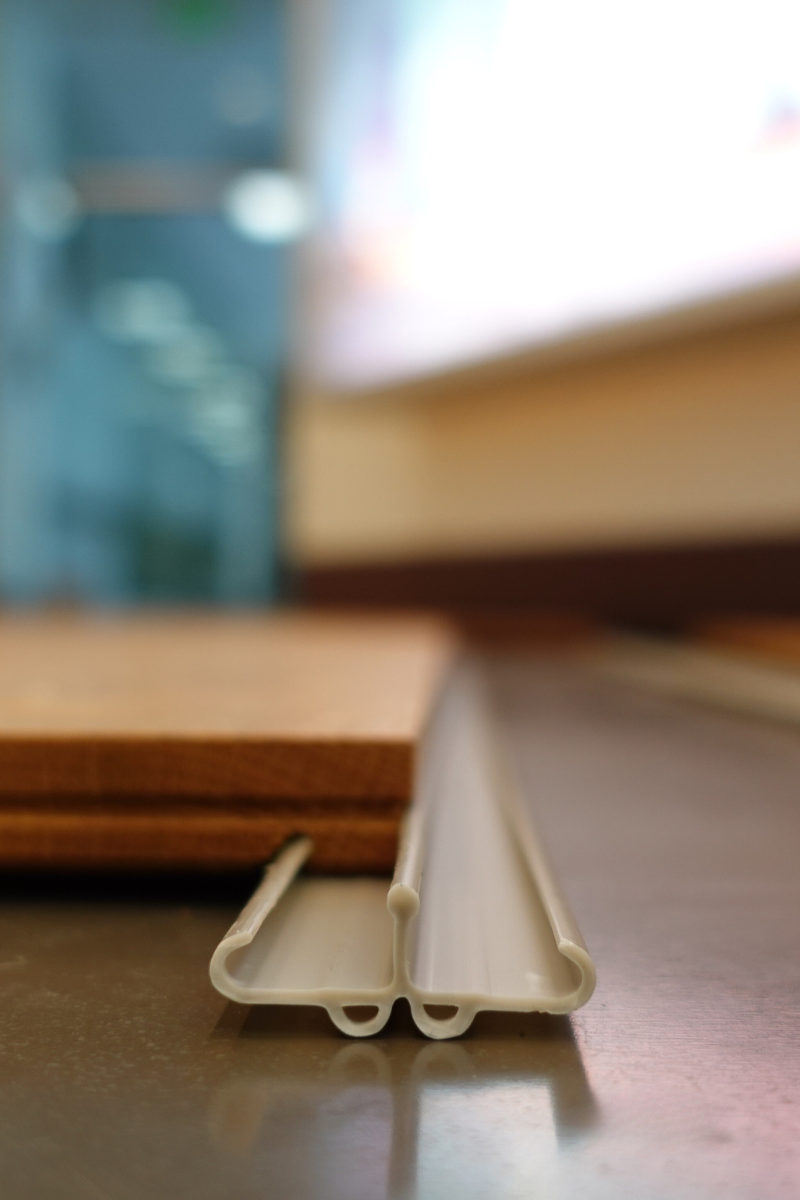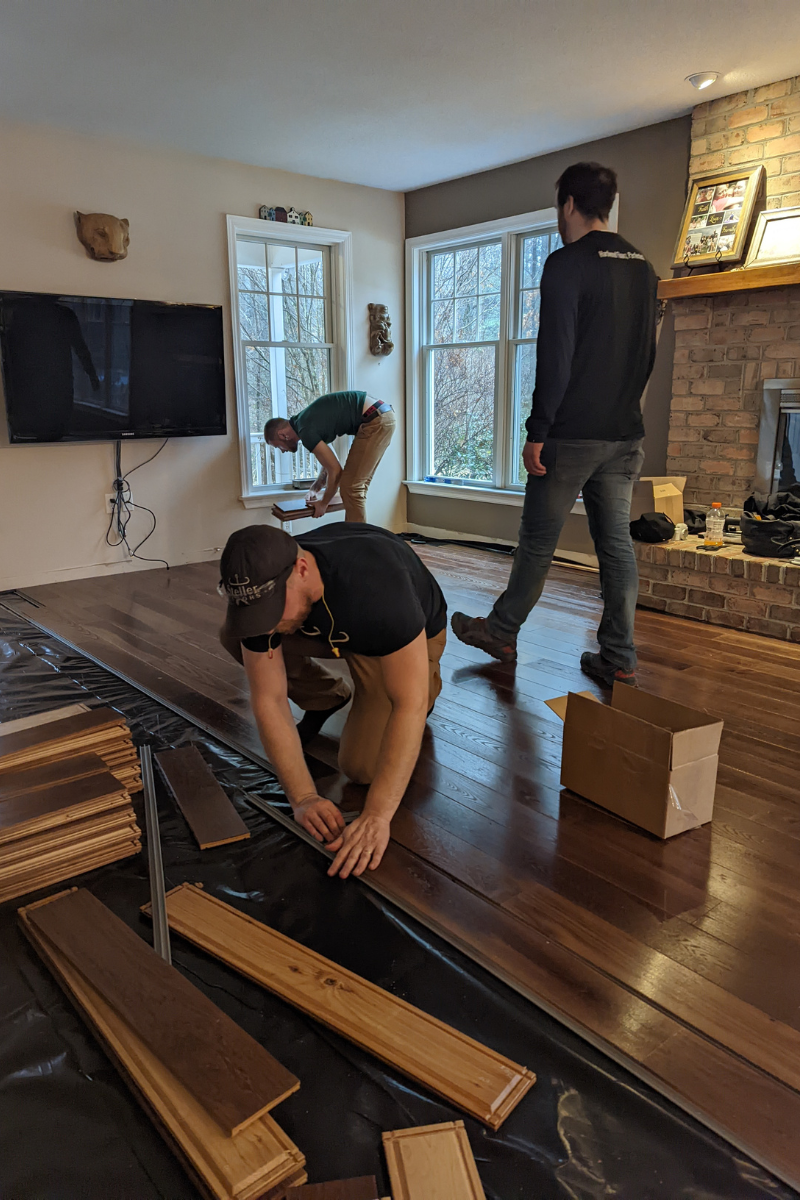Steller Subfloor Compatibility
Steller Floors float over the subfloor by attaching plank-to-plank instead of plank-to-subfloor. That means your Steller Floor is compatible with a variety of subfloor materials.
Below you can learn about:
- OSB and Plywood,
- Concrete on slab and below grade,
- Subfloor heat,
- Raised panel,
- and more!
Steller Floors require subfloors that are flat, firm and dry.
Steller Floors are not considered structural, and so our floors can not be supported on subfloor beams alone.
Steller Floors recommends the industry standard flatness of 1/8" over 8-10' including deflection for optimal performance.
Like many floating floors, subfloor flatness and firmness is important, but being level is not critical to function.
Subfloors should be dry and/or use a moisture barrier. In the case of concrete, materials should be tested for moisture.
Typical Subfloors are Great with Steller
Advantec and other similar subfloors are a great match for Steller Floors because they are flat and firm.
Pro-tip: Ensure seams along panel edges are not placed too tightly to avoid bulging.

Cement subfloor construction is compatible with Steller Floors with a moisture barrier - even below-grade.
Pro-tip: Check flatness with a 4' level and a coin and consider remediating when a coin slides underneath.
Need to access your subfloor?
Steller Floors are ideal for raised panel systems because it is easy to remove our real, solid wood planks without complex tools - and replace them easily without loss.
Looking to Upgrade your Space?
Steller Floors are easy to install and repair over many forms of subfloor heat including hydronic, hydronic nested in concrete, and polymeric.
Pro-tip: All wood floors recommend limiting temperatures directly beneath the floor to 80 degrees F

